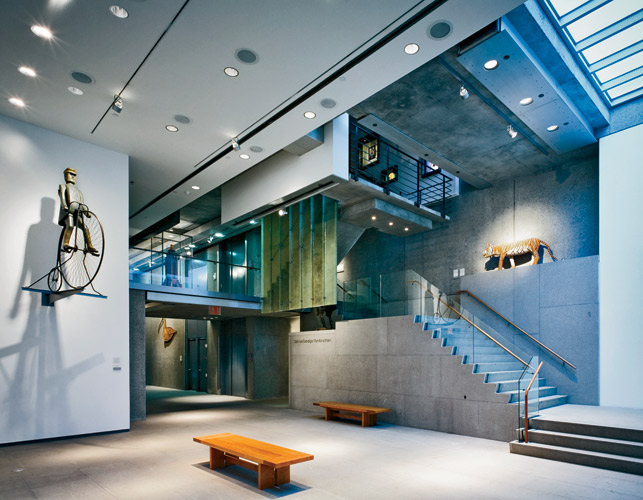That is the headline of a nicely nuanced article by James S. Russell in the current issue of Architectural Record, subtitled: The difficult cause of willful buildings that demand heroic efforts to preserve.
Apart from the fact that the article closely reflects my own attitudes to architecture, I find it an excellent example of why in this age of instant Internet-based gratification served by the archi-pop sites, long form writing should continue to have suitable outlets.
Triggered by the controversy over the proposed demolition of the 13 years old American Folk Art Museum, designed by Tod Williams and Billie Tsien, because the Museum of Modern Art's latest expansion designed by Diller Scofidio + Renfro could not usefully incorporate it into the project, the article examines the more widespread issue of why some remarkable buildings survive while others become a reproach to their authors, and to architecture are generally.
Russell could make much more polemic capital from the key quote that is most likely to be picked up by others:
Obduracy concerns more than aging buildings. The Folk Art controversy would seem to vindicate critics of contemporary architectural spectacle, who see a Frank Gehry or Thom Mayne building as ego-driven personal statements indulged by spineless clients in thrall to the architect's Svengali spell. These will be tomorrow's white elephants, they argue.
- Does the building find a broad constituency?
- Can the building be adapted?
- Can the building make a compelling case in aesthetic terms?
- Does the building have an owner with passion who will hire an architect of extraordinary sensitivity?
The examples around which Russell builds his case are the usual suspects: Boston City Hall, Rudolph's 1963 Art and Architecture building at Yale, and the same architect's abandoned Government Center in Goshen, NY. It isn't a survey article, yet part of the author's skill is in his ability to make a relatively small sample seem representative of the bigger problem. Similarly, he manages to engage with the whole academic complexity of the topic, while keeping the language and length of the article effortlessly accessible.
In my opinion, a must read in these times of confronting and idiosyncratic architecture, and highly polarised professional and public opinions. Read the original article here.

No comments:
Post a Comment